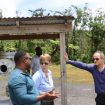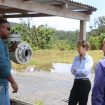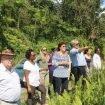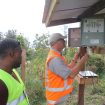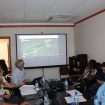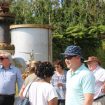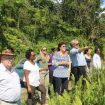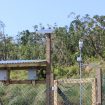The DGDC's Resettlement
Action Plan
The proposed Project is located in the Roseau Valley in the Wotten Waven Geothermal System.
In September 2017, the Island was devastated by Hurricane Maria. This Resettlement Action Plan has been developed post the Hurricane and reflects changes in land use, land acquisition and livelihood restoration for the Project post the disaster.
The ARAP was prepared on behalf of the New Zealand (NZ) Ministry of Foreign Affairs & Trade for the Dominica Geothermal Power Plant Project, located in the Roseau Valley, Dominica. The ARAP has been developed based on the results of the census survey conducted by DGDC of potentially affected landowners at the power plant and along the reinjection line route. Socio-economic census was conducted for purposes of ARAP, in 2018 and updated in 2020 to reflect changes in the community and people directly affected by the project footprint. The resettlement action plan is a living document and will be updated periodically.
Within the Roseau Valley, a primary area of influence has been identified, comprising the three main communities in closest proximity to the proposed Project footprint. Due to their proximity, they are the most likely to affected by any employment, resettlement, community health and safety issues which arise from the Project.
Resettlement Action Plan (Updated)
- Version 2.0
- 3077 downloads
World Bank resettlement policies recognise the need to provide resettlement, compensation, and / or livelihood restoration assistance to persons that are currently utilising project affected land. Thus, the displacement of residents and farmers from the site and reinjection route are addressed in this ARAP.
There are a number of national policies, laws, regulations and guidelines that guide relevant environmental, social and economic issues in Dominica. The laws and regulations also provide the relevant instruments for the effective management of land acquisition and proper institutional coordination. Of primary relevance is the Land Acquisition Act.
The Project is required to meet nationally and internationally accepted environmental and social safeguard standards in order to ensure that community benefits from the Project are maximised, and that potential adverse environmental and social impacts are minimized.
ESIA: Non-Technical Summary
Non-Technical Summary (NTS) provides an overview, in plain language, of the main findings of the Environmental and Social Impact Assessment (ESIA)
- Version 2.0
- 3447 downloads



